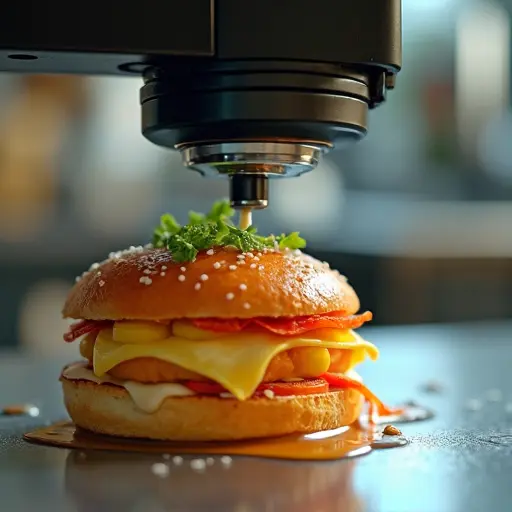
The Kitchen Revolution
Imagine printing your dinner instead of shopping for it. By 2040, 3D food printers could make supermarkets obsolete, according to food tech experts. These devices layer edible materials – from chocolate to plant proteins – creating customized meals at home with the push of a button.
How It Works
Current models like Foodini and ByFlow use extrusion technology: food-grade syringes deposit purees, doughs, or melted ingredients layer by layer. Advanced printers now handle multi-ingredient recipes and remote designs via smartphone apps. Research shows the 3D food printing market could hit $42.5 million by 2025, growing at 54.75% annually.
Supermarkets in Crisis?
As Walter Robb, former Whole Foods CEO, notes: "We'll see technology and humanity joined throughout the food chain." Home printing eliminates packaging waste, reduces food miles, and enables hyper-personalized nutrition. A Frontiers in Food Science study confirms printed foods can encapsulate probiotics and bioactive compounds for health benefits.
Challenges Ahead
Texture replication remains tricky – printed steak doesn't yet mimic real meat's mouthfeel. Current printers also struggle with speed, taking minutes for simple designs. However, companies like Aleph Farms are advancing 3D-printed cultured meat, while startups focus on plant-based cartridges.
As Dr. M.S. Roopesh (University of Alberta) observes: "The customization aspect could disrupt traditional food systems, but affordability and consumer acceptance are key hurdles."

 Nederlands
Nederlands English
English Français
Français Deutsch
Deutsch Español
Español Português
Português


